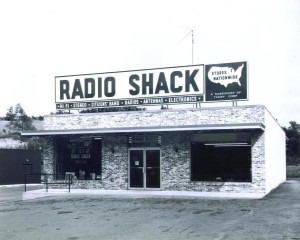By Chris Warren.
My daily “uniform” is jeans and a t-shirt, unless it’s warm out, then it’s shorts and a t-shirt. Heck, I don’t even own a suit. I’ve never been a dress up guy. The closest I get to dressing up is some nice shirts and jeans picked out by someone with a better sense of style than myself. It saves me money, and my wardrobe does not turn over that often. I did not realize until recently that my non-participation in fast fashion had an environmental as well as practical benefit.
Fast fashion is an industry buzzword that means to churn out inexpensive, trendy clothes. Instead of new styles being introduced two or three times a year, clothing is continuous stream of new designs that flips every month or so. By speeding up the clothing design & production process and lowering the price, retailers calculate that there is more profit in selling several less expensive items than one big ticket item. Therefore, the faster a garment becomes obsolete, the sooner consumers can be sold something else.
If a shopper buys a $500 dress, they expect it to last a long time, both in style and physical wear. But if you can sell them a $50 dress that is essentially a clone of a prestigious brand, they don’t care so much if it is out of fashion after a few months or even if it is cheaply made. It’s not going to be around that long anyway. They will buy a new dress four, five, six times or more every year to keep up with fast fashion. By the way, this scheme is used on men’s clothing too.
That’s how fast fashion brings in the money, and shoppers are taking the bait. Six $50 dresses cost the consumer a lot less than one $500 dress, and the retailer makes at least as much if not more profit. There is an added bonus: Getting the customer in the store six or more times a year (as opposed to one or two) is more opportunities to upsell other products.
Very few plots to vacuum out consumers’ wallets have been as effective as fast fashion. As a marketing strategy, it’s brilliant. Normally I would leave this alone and let capitalism run its course. This time though, the environmental impact of fast fashion cannot be given a pass.
Cheaply made clothes that are discarded frequently and replaced with more cheaply made clothes equals lot of unwanted clothes, not to mention the energy, resources, and sweatshop labor needed to produce and transport them to market. The Council for Textile Recycling estimates that the average American throws out 70 lbs. (31.75 kg) of clothing and other textiles every year…and that estimate is from 2009, well before fast fashion became fashionable!
Only a small percentage of this material is recycled, donated, or otherwise put to another useful purpose. What’s worse, the fabric is almost entirely synthetic and will last decades in a landfill. The unintended consequence of fast fashion is millions of tons of waste every year. The clothing industry is paying only vague attention to this issue, making token efforts to promote environmentally responsible practices.
Unfortunately, fast fashion is a marketing tactic that creates an artificial need for a what is essentially a throwaway product, without much regard for the impact that product has on the environment.
While many will (correctly) lay responsibility at the feet of the retailers and manufacturers, the consumer is a willing and equal party to cramming last month’s fashions into the landfills. I think I’ll hang onto my five year old jeans and go about my very unstylish life. I may not look like the latest big thing, but the Earth will look better for not having so much of my old clothes buried in it.






